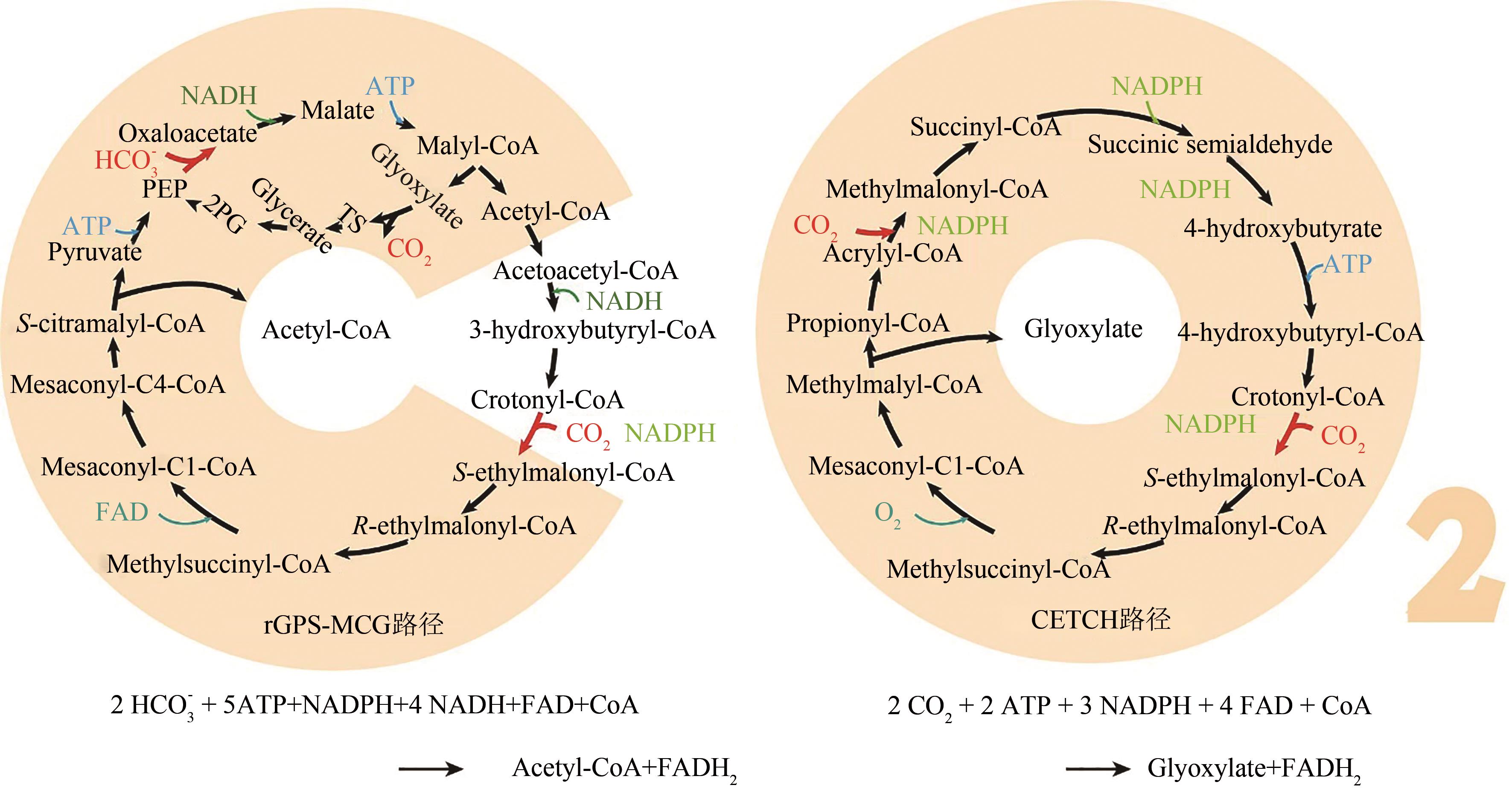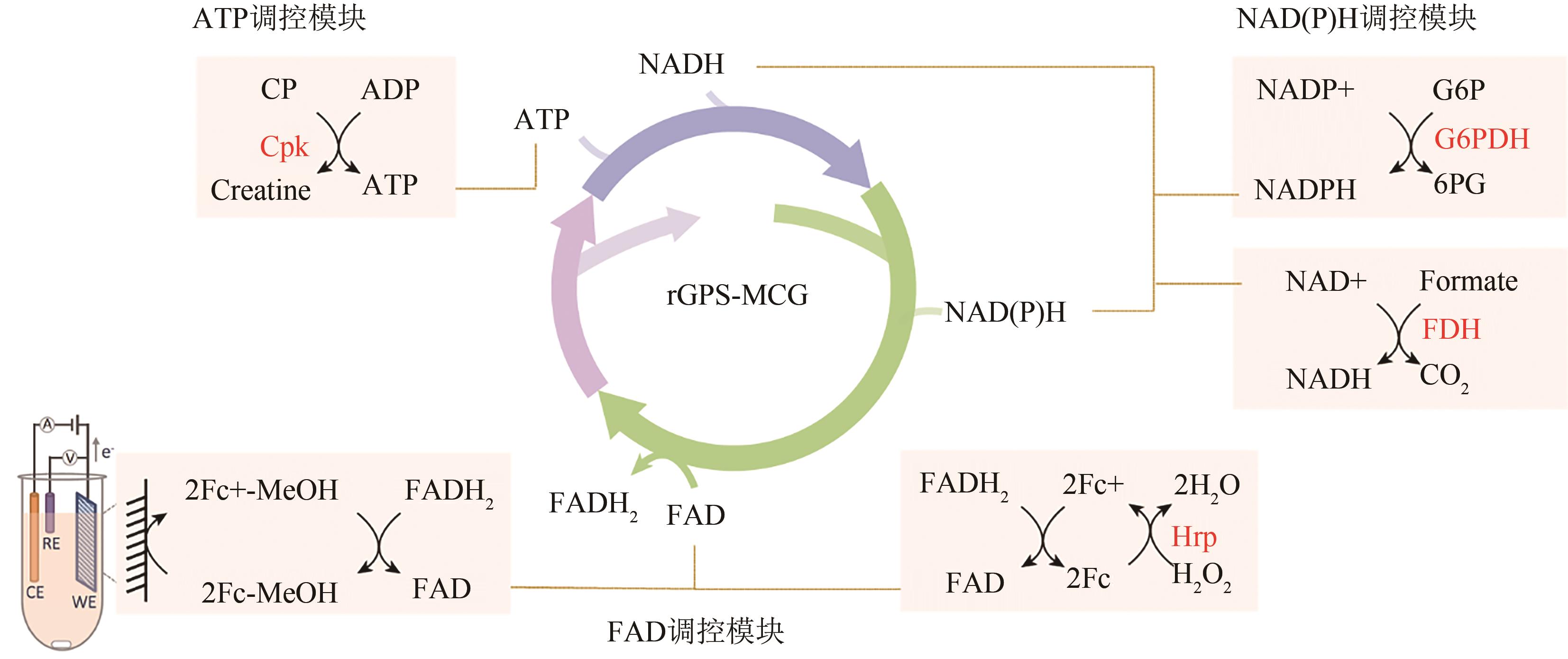| 1 |
PEPLOW M. The race to upcycle CO2 into fuels, concrete and more[J]. Nature, 2022, 603(7903): 780-783.
|
| 2 |
LIU Z H, WANG K, CHEN Y, et al. Third-generation biorefineries as the means to produce fuels and chemicals from CO2 [J]. Nature Catalysis, 2020, 3(3): 274-288.
|
| 3 |
任杰, 曾安平. 基于二氧化碳的生物制造: 从基础研究到工业应用的挑战[J]. 合成生物学, 2021, 2(6): 854-862.
|
|
REN Jie, ZENG Anping. CO2 based biomanufacturing: from basic research to industrial application[J]. Synthetic Biology Journal, 2021, 2(6): 854-862.
|
| 4 |
RASOR B J, VÖGELI B, LANDWEHR G M, et al. Toward sustainable, cell-free biomanufacturing[J]. Current Opinion in Biotechnology, 2021, 69: 136-144.
|
| 5 |
LUO S S, LIN P P, NIEH L Y, et al. A cell-free self-replenishing CO2-fixing system[J]. Nature Catalysis, 2022, 5(2): 154-162.
|
| 6 |
MAINGUET S E, GRONENBERG L S, WONG S S, et al. A reverse glyoxylate shunt to build a non-native route from C4 to C2 in Escherichia coli [J]. Metabolic Engineering, 2013, 19: 116-127.
|
| 7 |
YU H, LI X Q, DUCHOUD F, et al. Augmenting the Calvin-Benson-Bassham cycle by a synthetic malyl-CoA-glycerate carbon fixation pathway[J]. Nature Communications, 2018, 9(1): 2008.
|
| 8 |
HONG Y, REN J, ZHANG X Y, et al. Quantitative analysis of glycine related metabolic pathways for one-carbon synthetic biology[J]. Current Opinion in Biotechnology, 2020, 64: 70-78.
|
| 9 |
BAR-EVEN A, NOOR E, LEWIS N E, et al. Design and analysis of synthetic carbon fixation pathways[J]. Proceedings of the National Academy of Sciences of the United States of America, 2010, 107(19): 8889-8894.
|
| 10 |
SCHWANDER T, VON BORZYSKOWSKI L S, BURGENER S, et al. A synthetic pathway for the fixation of carbon dioxide in vitro [J]. Science, 2016, 354(6314): 900-904.
|
| 11 |
XIAO L, LIU G X, GONG F Y, et al. A minimized synthetic carbon fixation cycle[J]. ACS Catalysis, 2022, 12(1): 799-808.
|
| 12 |
CAI T, SUN H B, QIAO J, et al. Cell-free chemoenzymatic starch synthesis from carbon dioxide[J]. Science, 2021, 373(6562): 1523-1527.
|
| 13 |
ZHENG T T, ZHANG M L, WU L H, et al. Upcycling CO2 into energy-rich long-chain compounds via electrochemical and metabolic engineering[J]. Nature Catalysis, 2022, 5(5): 388-396.
|
| 14 |
MANGAN N M, FLAMHOLZ A, HOOD R D, et al. pH determines the energetic efficiency of the cyanobacterial CO2 concentrating mechanism[J]. Proceedings of the National Academy of Sciences of the United States of America, 2016, 113(36): E5354-E5362.
|
| 15 |
王凯, 刘子鹤, 陈必强, 等. 微生物利用二氧化碳合成燃料及化学品——第三代生物炼制[J]. 合成生物学, 2020, 1(1): 60-70.
|
|
WANG K, LIU Z H, CHEN B Q, et al. Microbial utilization of carbon dioxide to synthesize fuels and chemicals — third-generation biorefineries[J]. Synthetic Biology Journal, 2020, 1(1): 60-70.
|
| 16 |
GIESSEN T W, SILVER P A. Engineering carbon fixation with artificial protein organelles[J]. Current Opinion in Biotechnology, 2017, 46: 42-50.
|
| 17 |
YOU C, SHI T, LI Y J, et al. An in vitro synthetic biology platform for the industrial biomanufacturing of myo-inositol from starch[J]. Biotechnology and Bioengineering, 2017, 114(8): 1855-1864.
|
| 18 |
MA W C, XIE S J, ZHANG X G, et al. Promoting electrocatalytic CO2 reduction to formate via sulfur-boosting water activation on indium surfaces[J]. Nature Communications, 2019, 10: 892.
|
| 19 |
GUO W W, LIU S J, TAN X X, et al. Highly efficient CO2 electroreduction to methanol through atomically dispersed Sn coupled with defective CuO catalysts[J]. Angewandte Chemie International Edition, 2021, 60(40): 21979-21987.
|
| 20 |
CLAASSENS N J, COTTON C A R, KOPLJAR D, et al. Making quantitative sense of electromicrobial production[J]. Nature Catalysis, 2019, 2(5): 437-447.
|


